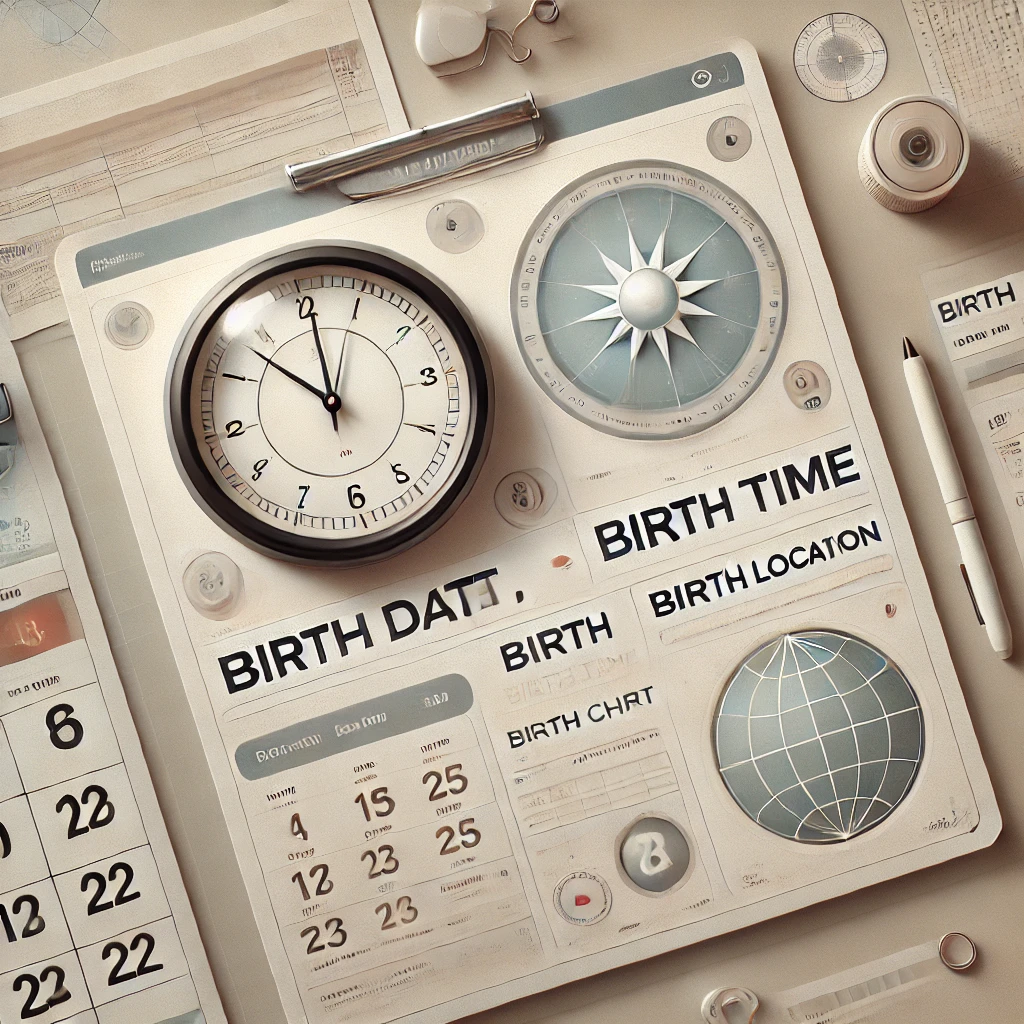Introduction: Discovering the Secrets of Your Birth Chart
When you take a look at your birth chart, it’s like opening a cosmic map tailored specifically for you. But what’s a beginning chart? In astrology, a birth chart (additionally called a natal chart) captures the positions of the planets at the precise moment of your delivery. It’s an effective device that defines your personality, strengths, demanding situations, and capacity life paths.
In this manual, we’ll damage your way down the way by reading your start chart little by little so that you can interpret your astrological chart with self-assurance. Let’s dive into this captivating journey through the celebs and unencumber your celestial blueprint!
Step 1: Gather Your Birth Details

To create your birth chart, you need three critical pieces of information:
- Birth Date: The genuine day, month, and year you had been born.
- Birth Time: The unique hour and minute of your beginning (be as accurate as possible).
- Birth Location: The town and country in which you had been born.
These details help pinpoint the precise positions of the planets, supplying you with an accurate delivery chart that reflects your unique cosmic fingerprint.
Step 2: Understanding the Structure of the Birth Chart

When you see your delivery chart, it could appear like a circle divided into 12 sections. Don’t fear—it’s less complicated than it seems! Each segment represents a house, and each planet’s function falls into this sort of home and zodiac signs and symptoms. Here’s a breakdown:
- The 12 Houses: Each house for your start chart corresponds to different elements of existence, like self-identity, money, relationships, and profession.
- Zodiac Signs: The 12 zodiac signs and symptoms affect how the electricity of each residence manifests in your lifestyle.
- Planets: The planets symbolize precise energies or elements of your character, together with communication (Mercury), love (Venus), and motion (Mars).
Step 3: Locate Your Rising Sign or Ascendant

The first factor to consider for your birth chart is your rising signal, additionally called the ascendant. It’s the zodiac sign that rose on the Japanese horizon at the time of your birth, and it shapes how others see you and your initial reactions to conditions.
How to Find It:
- Look at the outer fringe of your beginning chart to discover the sign on the nine o’clock role (the primary house). This is your rising sign.
- Your rising sign units the level to your complete delivery chart, dictating the order of the houses.
For example, if your growing sign is Aries, you’ll probably have Taurus in your second residence, Gemini in your third residence, and so forth.
Step 4: Identify Your Sun and Moon Signs

Your Sun and Moon signs are essential in informing your center character and emotional nature.
- Sun Sign: This is your significant identity and ego. It represents your aware self, will, and drive. Look for the Sun symbol (☉) for your chart and observe which zodiac signal and residence it’s in.
- Moon Sign: This well-known sign shows your emotional global, instincts, and subconscious. Find the Moon image (☽) and pick out the signal and residence it occupies.
Together, your Sun, Moon, and growing signs shape the foundation of your astrological profile, supplying insight into who you are at the core and the way you engage with the sector.
Step 5: Explore the Planetary Placements

Each planet to your start chart governs distinct aspects of your personality and reviews:
- Mercury: Communication and idea strategies
- Venus: Love, relationships, and aesthetics
- Mars: Action, drive, and motivation
- Jupiter: Growth, success, and awareness
- Saturn: Responsibility, subject, and demanding situations
- Uranus: Innovation and exchange
- Neptune: Dreams and intuition
- Pluto: Transformation and power
How to Analyze Planetary Placements:
- Identify the sign and residence of every planet for your beginning chart.
- For instance, if Mars is in Leo on your seventh residence, it indicates that your assertive, fiery energy (Mars) is expressed in your relationships (7th house) confidently and dramatically (Leo).
Step 6: Interpret the Aspects Between Planets

The components in your delivery chart are the angles between planets, showing how they interact and influence each other. These angles display harmony, anxiety, or training you want to navigate. The maximum commonplace components are:
- Conjunction (0°): Planets near collectively, blending energies.
- Square (90°): Tension that calls for increase and attempt.
- Trine (120°): A harmonious float of energies, bringing ease.
- Opposition (a hundred and eighty°): Balance or warfare between opposing forces.
To find elements:
Look at the lines connecting planets inside the chart. These lines imply the relationship between the planets and provide clues about your challenges and strengths.
Step 7: Understand the Houses and Their Meanings

Each of the 12 houses on your birth chart represents unique existence regions:
1st House: Self and appearance
2nd House: Finances and values
3rd House: Communication and gaining knowledge of
4th House: Home and circle of relatives
5th House: Creativity and romance
6th House: Health and routine
7th House: Partnerships and marriage
8th House: Transformation and shared resources
9th House: Philosophy and tour
10th House: Career and Public Existence
11th House: Friendships and social networks
12th House: Spirituality and hidden topics
Understanding which planets fall into these homes helps you notice which regions of existence they impact the most. For instance, if Venus is your fifth residence, love and creativity would play an extensive position in your existence.
Step 8: Put It All Together
Now that you’ve found out the components of your delivery chart let’s bring it all together:
- Identify your Rising Sign and the way it units the tone on your chart.
- Examine your Sun and Moon Signs to apprehend your core identification and emotions.
- Analyze Planetary Placements to peer how every planet affects extraordinary regions of your life.
- Explore Aspects among planets for perception of your strengths and challenges.
Final Thoughts: Becoming Your Astrologer
Reading your birth chart may seem overwhelming in the beginning, but with practice, it will become a charming device for self-discovery. Remember, your start chart is sort of a roadmap that guides you via lifestyle studies, helping you make sense of your emotions, picks, and relationships.
Whether you’re just curious or diving deep into astrology, your start chart gives perception and steerage. Take your time exploring the chart’s elements, and experience the journey of uncovering your cosmic tale.

